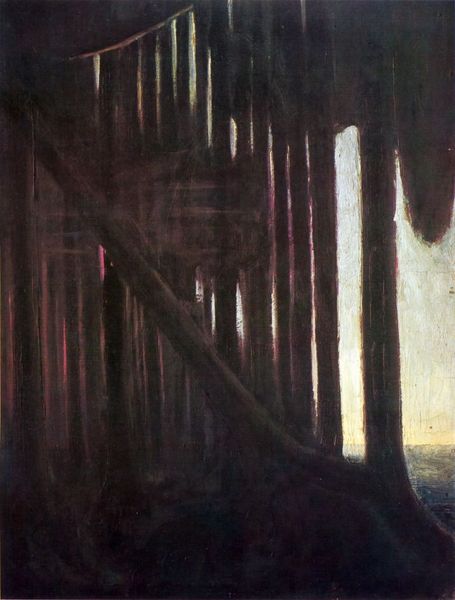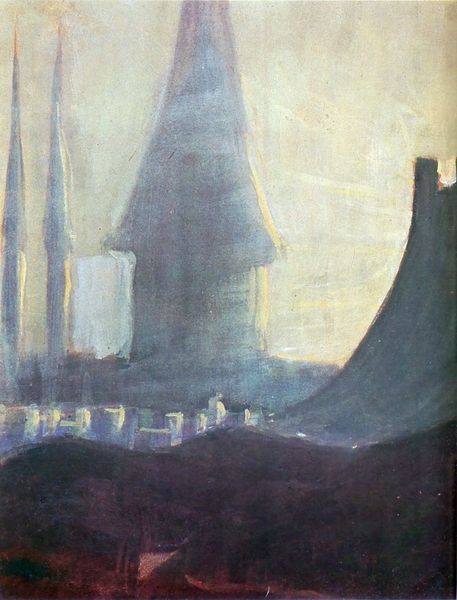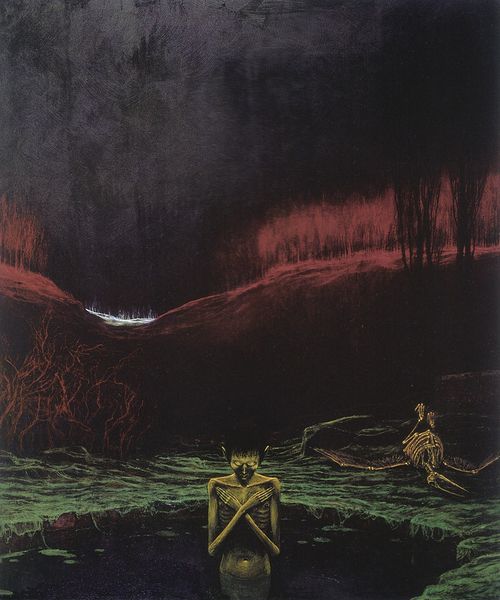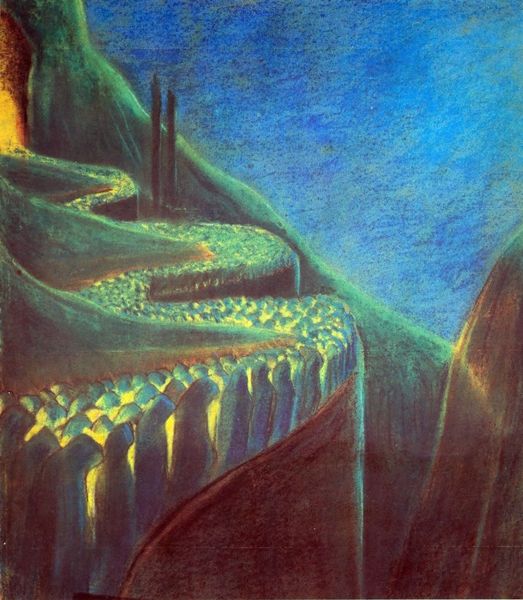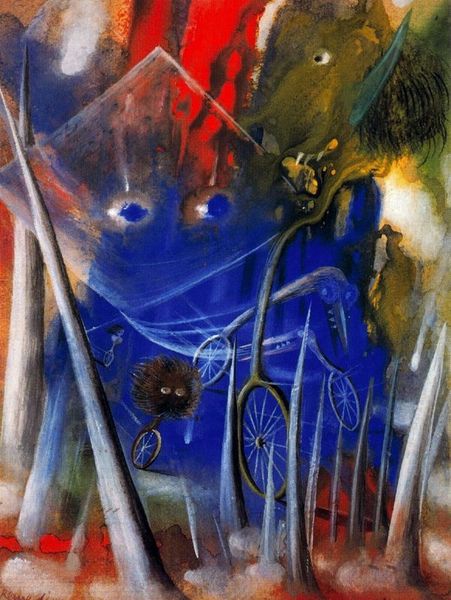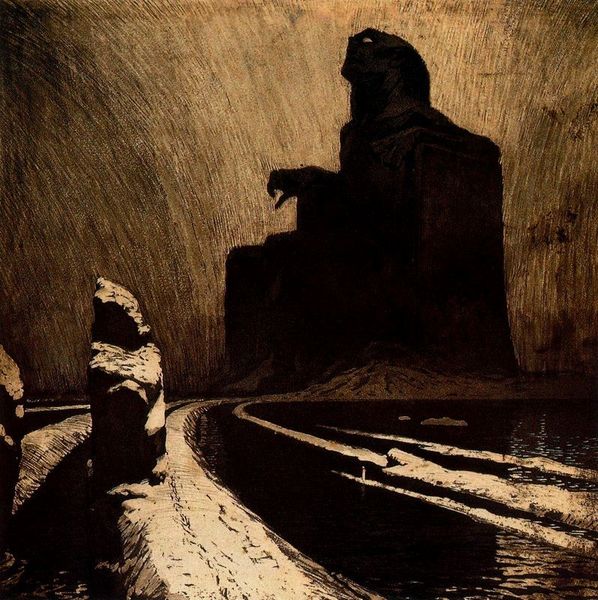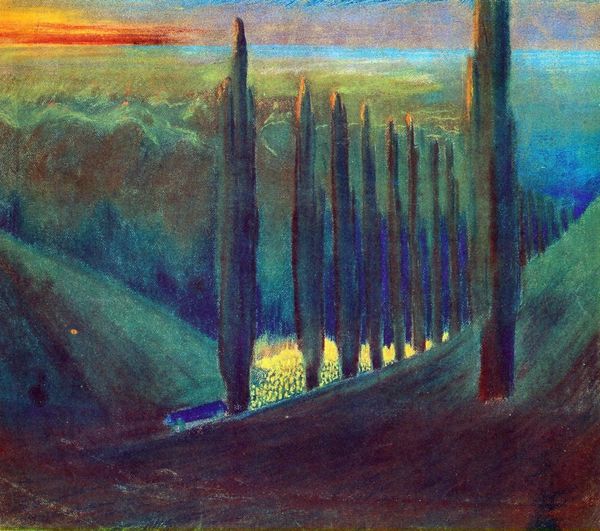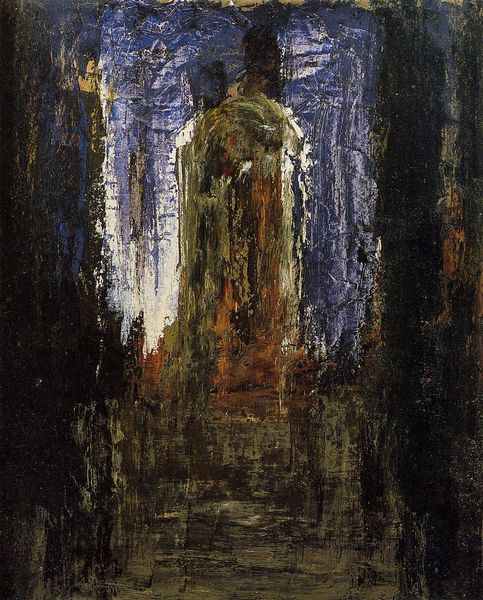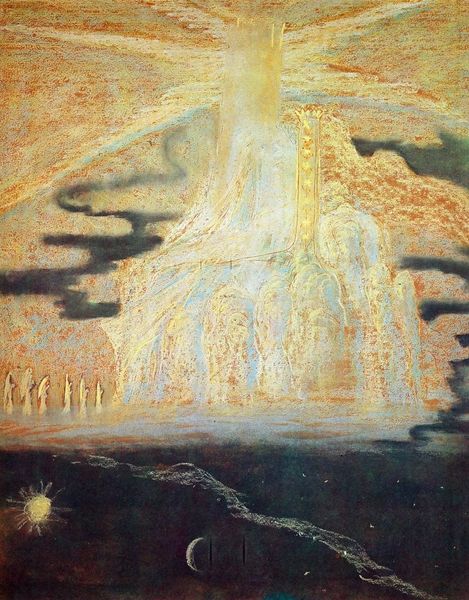
tempera, pastel, mural
#
allegories
#
allegory
#
tempera
#
symbol
#
landscape
#
possibly oil pastel
#
oil painting
#
expressionism
#
symbolism
#
pastel
#
history-painting
#
mural
#
expressionist
Dimensions: 73 x 62 cm
Copyright: Public domain
Curator: Before us is “Funeral Symphony (V),” created by Mikalojus Konstantinas Ciurlionis in 1903. Executed in tempera, this piece embodies the artist's unique symbolic language. Editor: It feels profoundly mournful. The colour palette is stark, a chilly blue dominating the sky. A looming figure of death presides over a scene of obvious grief—the huddled figures convey a deep sense of loss. Curator: Ciurlionis uses a simplified formal language. The shapes are distilled to their essence. Note the stark geometry of the coffin, how it acts as a grounding block against the more fluid, emotive forms. Editor: Yes, but beyond pure formalism, we need to examine this work within its context. Early 20th century Lithuania experienced intense socio-political turmoil and a resurfacing of nationalist sentiment. Considering this piece alongside these realities allows us to think of this funeral as representing a collective cultural mourning. The scythe and the skeletal figure stand in judgement not of single person, but perhaps, an entire culture’s decay. Curator: An interesting point. Ciurlionis integrates musical structure and theory into visual art through what he termed “visual sonatas." He developed these multi-panel compositions meant to emulate the experience of hearing music, and this particular piece, a panel from the Funeral Symphony set, seems to embody its structure and harmonic progressions using color and form. Editor: Indeed, music as a structural device… and think about those mourners lined up as repetitive notes within a melody, symbolizing not only sadness, but social uniformity amidst larger power structures of that time. Are they united or simply forced to present a show of solemnity under social pressures? Curator: The beauty, to me, is that the pastel’s inherent fragility underscores that ephemeral state of being. Even death seems softened and ethereal through the powdery texture. Editor: I agree, but I think the ghostly nature speaks to the ongoing cycles of struggle—past traumas echoed across generations. There are no resolute ends. The “symphony” lingers with unresolved chords… Curator: I am drawn to the stark lines of the piece and the artist’s compositional genius in creating these symbolic scenes. Editor: And I walk away thinking about how artists like Ciurlionis challenge us to ask about the cultural landscapes that shape artistic output, and in return, influence society itself.
Comments
No comments
Be the first to comment and join the conversation on the ultimate creative platform.

